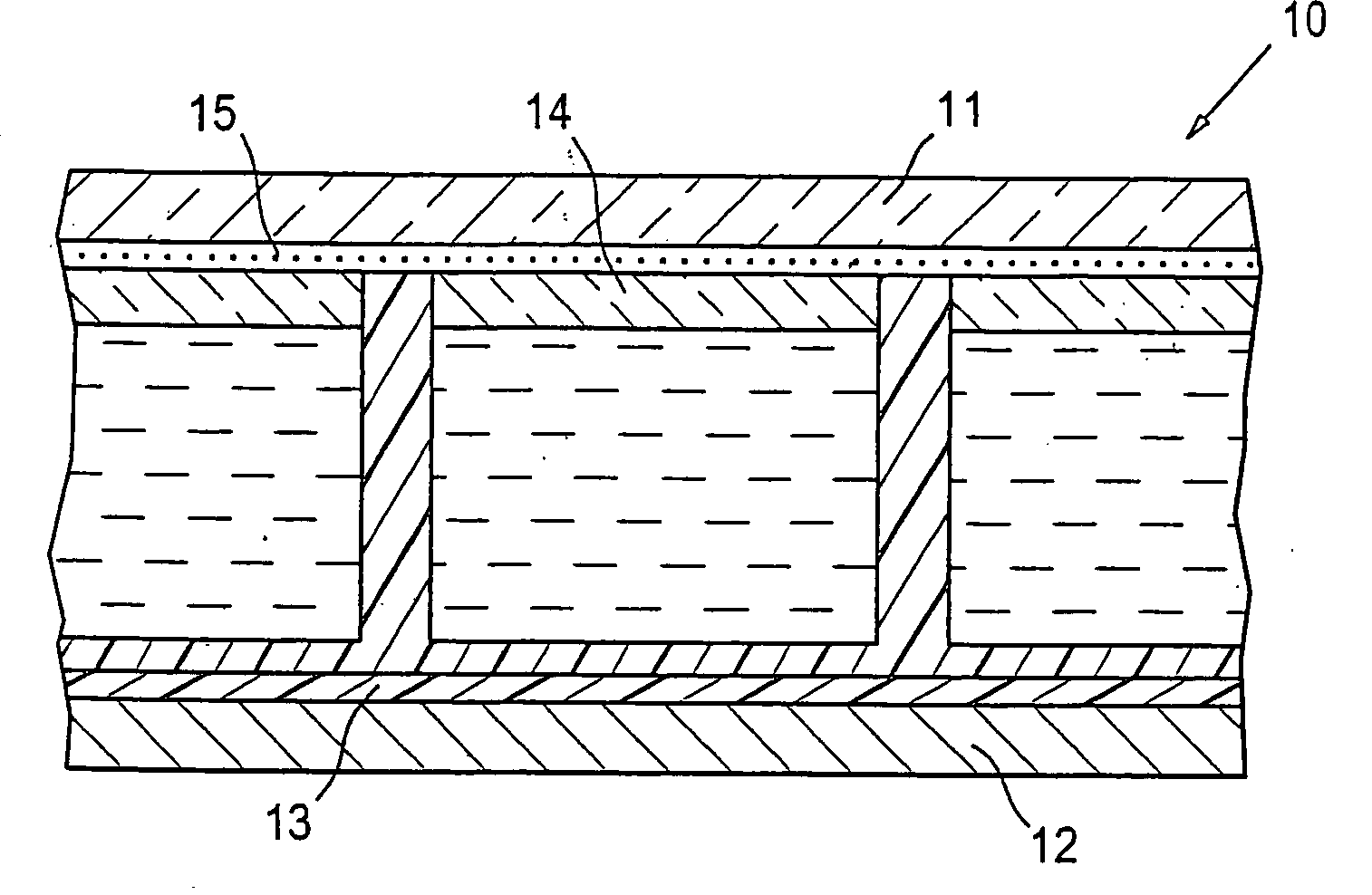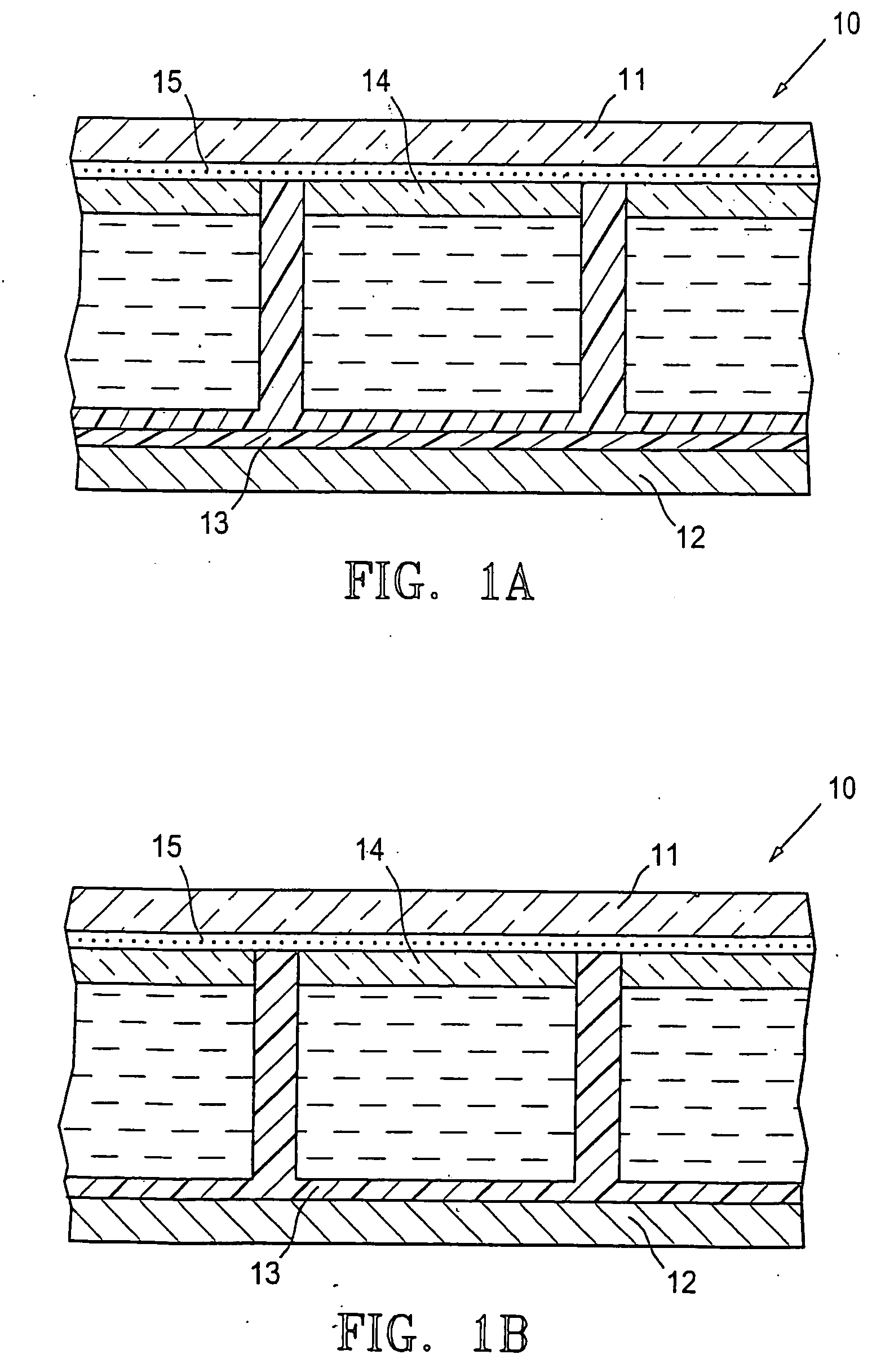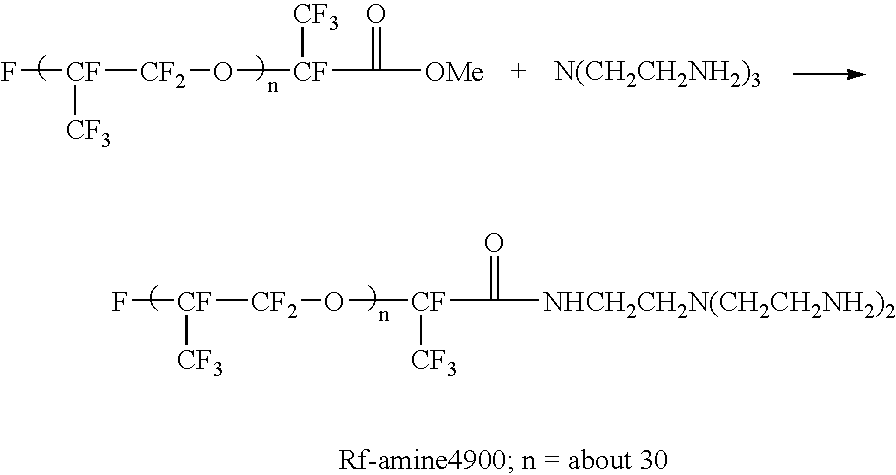Methods and compositions for improved electrophoretic display performance
a technology of electrophoretic display and composition, which is applied in the direction of organic conductors, non-metal conductors, conductive materials, etc., can solve the problems of deterioration of contrast ratio and image bistability, thin protective layer method also has disadvantages, etc., and achieves image bistability and increase contrast ratio
- Summary
- Abstract
- Description
- Claims
- Application Information
AI Technical Summary
Benefits of technology
Problems solved by technology
Method used
Image
Examples
example 1b
Preparation of Microcups
[0103]
TABLE 1Microcup CompositionComponentWeight PartSourceEB 60033.15UCBSR 39932.24SartomerHDDA20.61UCBEB13606.00UCBHycar X438.00BF GoodrichIrgacure 3690.20CibaITX0.04AldrichAntioxidant Ir10350.10Ciba
[0104] 33.15 Gm of EB 600™ (UCB, Smyrna, Ga.), 32.24 gm of SR 399™ (Sartomer, Exton, Pa.), 6.00 gm of EB1360™ (UCB, Smyrna, Ga.), 8 gm of Hycar 1300×43 (reactive liquid polymer, Noveon Inc. Cleveland, Ohio), 0.2 gm of Irgacure™ 369 (Ciba, Tarrytown, N.Y.), 0.04 gram of ITX (Isopropyl-9H-thioxanthen-9-one, Aldrich, Milwaukee, Wis.), 0.1 gm of Irganox™ 1035 (Ciba, Tarrytown, N.Y.) and 20.61 gram of HDDA (1,6-hexanediol diacrylate, UCB, Smyrna, Ga.) were mixed thoroughly with a Stir-Pak mixer (Cole Parmer, Vernon, Ill.) at room temperature for about 1 hour, and degassed by centrifuge at 2000 rpm for about 15 minutes.
[0105] The microcup composition was slowly coated onto a 4″×4″ electroformed Ni male mold for an array of 72 μm (length)×72 μm (width)×35 μm (depth)×...
example 1c
Preparation of Electrophoretic Fluid
[0106] 5.9 Gm of TiO2 R900™ (DuPont) was added to a solution containing of 3.77 gm of MEK, 4.54 gm of N3400™ aliphatic polyisocyanate (Bayer AG) and 0.77 gm of 1-[N,N-bis(2-hydroxyethyl)amino]-2-propanol (Aldrich). The resultant slurry was homogenized for 1 minute at 5-10° C., after which 0.01 gm of dibutyltin dilaurate (Aldrich) was added and the mixture was homogenized for an additional minute. Finally a solution containing 20 gm of HT-200™ (Ausimont, Thorofare, N.J.) and 0.47 gm of Rf-amine4900 [a precondensate of Krytox methyl ester (from Du Pont) and tris(2-aminoethyl)amine (Aldrich) prepared as shown below] was added and the mixture was homogenized again for 3 more minutes at room temperature.
[0107] The Rf-amine4900 was prepared according to the following reaction:
[0108] The slurry prepared above was added slowly over 5 minutes at room temperature under homogenization into a mixture containing 31 gm of HT-200 and 2.28 gm of Rf-amine4900....
example 1d
Filling and Sealing with a Sealing Composition
[0109] 1 Gm of an electrophoretic composition containing 6 parts (based on dry weight) of the TiO2 microparticles prepared above and 94 parts of a HT-200 (Ausimont) solution of 1.5 wt % of a perfluorinated Cu-phthalocyanine dye (FC-3275, 3M, St. Paul, Minn.) was metered into the 4″×4″ microcup array prepared from Example 1B. The excess of fluid was scraped away by a rubber blade. The filled microcups were then overcoated with a 10% rubber solution consisting of 9 parts of Kraton G1650 (Shell, Tex.), 1 part of GRP 6919 (Shell), 3 parts of Carb-O-Sil TS-720 (Cabot Corp., Ill.), 78.3 parts of Isopar E and 8.7 part of isopropyl acetate by a Universal Blade Applicator and dried at room temperature to form a seamless sealing layer of about 2-3 μm dry thickness with good uniformity.
PUM
| Property | Measurement | Unit |
|---|---|---|
| glass transition temperature | aaaaa | aaaaa |
| glass transition temperature | aaaaa | aaaaa |
| depth | aaaaa | aaaaa |
Abstract
Description
Claims
Application Information
 Login to View More
Login to View More - R&D
- Intellectual Property
- Life Sciences
- Materials
- Tech Scout
- Unparalleled Data Quality
- Higher Quality Content
- 60% Fewer Hallucinations
Browse by: Latest US Patents, China's latest patents, Technical Efficacy Thesaurus, Application Domain, Technology Topic, Popular Technical Reports.
© 2025 PatSnap. All rights reserved.Legal|Privacy policy|Modern Slavery Act Transparency Statement|Sitemap|About US| Contact US: help@patsnap.com



